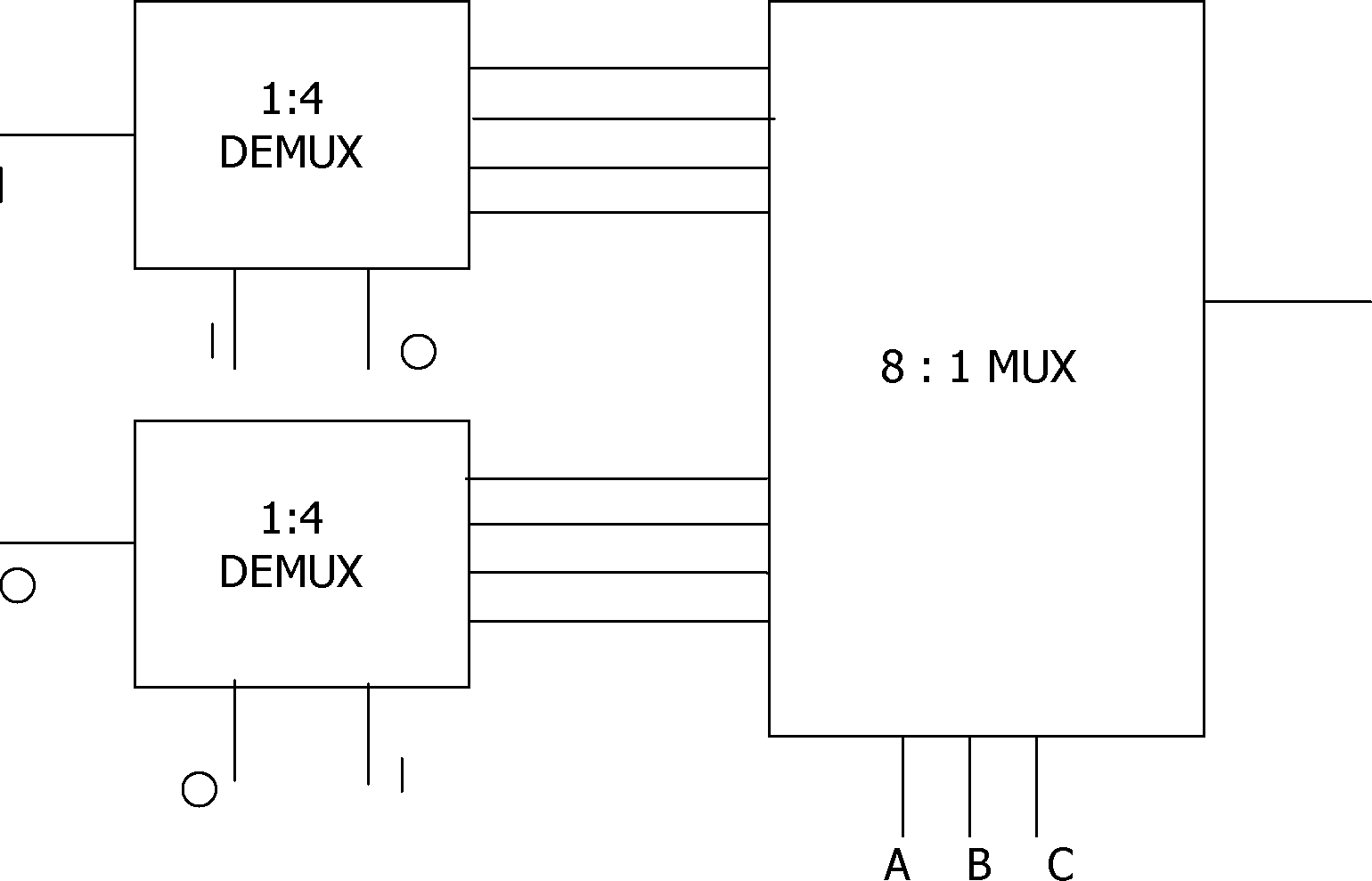Maharashtra State Board of Technical Education 2008 Diploma Computer Engineering Digital Techniques - Question Paper
Sample Question Paper - I
- Computer Engineering Group
Course Name Course code Semester Subject Duration
- CO/CM/CD/IF
- Third
- Digital Techniques
- 3 hours
Marks: 80
1. All questions are compulsory.
Instructions:
2. Figures to the right indicates full marks.
3. Use of non-programmable calculator is permissible.
Q 1: Attempt any Eight of the following:
(8 x 2 = 16)
a) Define Fan-out & Noise margin.
b) Represent timing diagram of digital signal for positive & negative logic in TTL.
c) Compare TTL & CMOS logic families(any four points).
d) Draw logic symbol & truth-table for EX-OR gate.
e) Simplify using Boolean algebra-
A.B + A.B + A.B
f) Draw block diagram of 4:1 MUX and give its truth table.
g) Draw Full Adder using two Half adders.
h) Draw neat diagram of clocked S-R flip-flop & write its truth-table.
i) Differentiate between static & dynamic RAM
j) Give the classification of different types of semiconductor memories.
Q 2: Attempt any Three of the following: (4 x 3 = 12)
a) Draw circuit for i) AND using NOR ii) OR using NAND.
b) State & prove De Morgan's Theorems.
c) Prove using De Morgan's Theorem -
i) (A + B) + (C+ D) = (A + B) (C+ D)
ii) A.B + C.D = AB . CD
d) Realize the following Boolean expression using basic gates.
i) Y = (A + C) (B+ C)
ii) Y = A.B + B. C
Q 3: Attempt any Three of the following: (4 x 3 = 12)
a) Draw 9-bit odd parity generator using IC 74180.
b) Draw & explain half subtractor.
c) Implement the following function using 8:1 MUX.
Y = Zm (0, 2, 3, 6).
d) Implement following expression using NAND gates only.
Y = A.B + B.C + C.A
Q 4: Attempt any Four of the following: (4 x 4 = 16)
a) Describe the function of 4-bit SISO shift register with the help of block diagram , truth-table, timing diagram.
b) State four applications of counters.
c) What is race around condition? How it can be avoided?
d) Compare RAM & ROM.
e) Design Asynchronous MOD-10 Counter.
f) Draw neat diagram of R/2R ladder type DAC. Find its output expression.
Q 5: Attempt any Three of the following: (4 x 3 = 12)
a) List advantages & disadvantages of Ramp type ADC.
b) Draw block diagram of Digital Comparator IC 7485 & write its function table.
c) Describe four specifications of DAC.
d) An 8-bit converter is driven by 500 KHz clock. Find -
i) Maximum conversion time
ii) Average conversion time.
Q 6: Attempt any Three of the following: (4 x 3 = 12)
a) Determine 8:1 MUX output as select inputs A,B,C change from 000 to 111.

b) Describe edge triggering & level triggering with respect to flip-flop.
c) An 8 MHz square wave clocks a 5-bit ripple counter. What will be the frequency at output of last flip-flop & the duty cycle of this counter.
d) Differentiate Synchronous & Asynchronous Counter (any four points).
3
|
Attachment: |
| Earning: Approval pending. |
